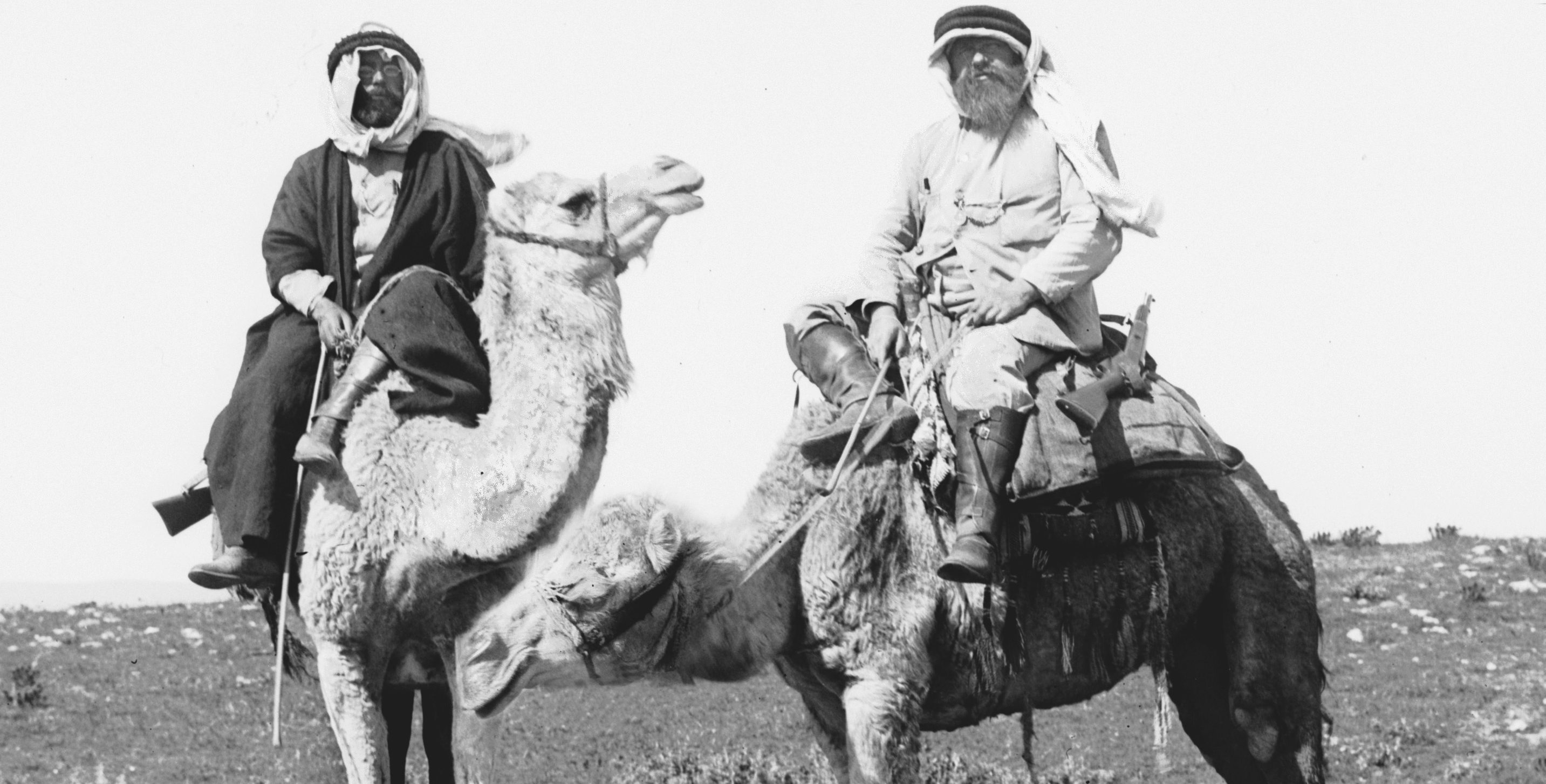Chronology – a history of our work sites
From its foundation in 1890, the École biblique was contemporary with the first archaeological excavations in Palestine. It contributed to the formulation of academic programs and the development of research disciplines on the ground.
Father Joseph-Marie Lagrange, the founder who wanted to read the Bible in the land of its birth, had conceived his historical-critical methodology by placing the text in its archaeological context, and against the wider background of Near Eastern studies. His first priority was to discover the land to understand it better.
Pioneers: Fathers Lagrange, Séjourné, then Jaussen and Savignac, accompanied by the young Vincent and Abel.
Principal dates: (Click here to see the complete list.)
***
From Father Lagrange to Father De Vaux
*The period of exploring and prospecting: 1880-1920
1885-1892: The site of the École biblique: uncovering the remains of the Byzantine basilica of St Stephen in order to restore it
1897: Mâdabâ: examination of the Map of Madaba
1907, 1909 et 1911: Northern Arabia, in the Hejaz: exploration, archaelogical and epigraphic harvesting with photographic documentation of the Nabataean sites by Jaussen and Savignac, collaborating with the Académie des Inscriptions.
1911: Jerusalem, Siloam Tunnel and underground areas: photographic documentation and systematic listings for the accounts of the English mission.
1914: Palmyra: epigraphic and photographic mission for the Académie des Inscriptions.
New wave of arrivals: De Vaux, Benoit, Tonneau, Barrois and Carrière
* First temporary and modest excavations: 1930-1940
***
From Father De Vaux to the present day
* Father De Vaux becomes Director and the excavations expand:
1946-1960: Tell el-Farʽah: nine excavation campaigns
1951-1956: Khirbet Qumran: exploration of the grottoes from 1951, then four excavation campaigns on site
1971-1980: Tell Keisan: in Galilee, stratigraphic excavations, eight campaigns
1981-1991: Khirbet al-Samra: in Jordan, stratigraphic excavations and urban clearing
1986: Mafraq in Jordan
1988-1989 ; 1991 and 1994: Amman, the Citadel, in Jordan
1993-1998: Northern Jordan: exploration of Early Bronze Age sites, with a Spanish team.
* At present, the École is working on many sites, with ongoing publication:
1995-1997 ; 1999 ; 2003-2005 ; 2012: Gaza: sites at Blakhiyah, Abassan el-Kabir, Mkheitim (Jabaliyah) and Nusayrat (St Hilarion), systematic excavations and/or rescue excavations
2008-2009: Tombs of the Kings: Jerusalem, rescue excavations
2010-2011: Crypt of the Church of St John the Baptist: Jerusalem, rescue excavations, under the aegis of UNESCO
2011: Mount of Olives: Jerusalem, around the Church of the Pater Noster (Eleona), rescue excavations
